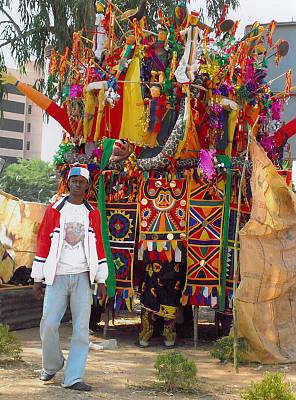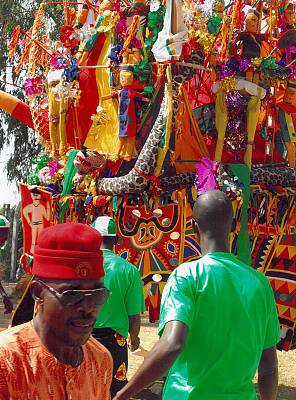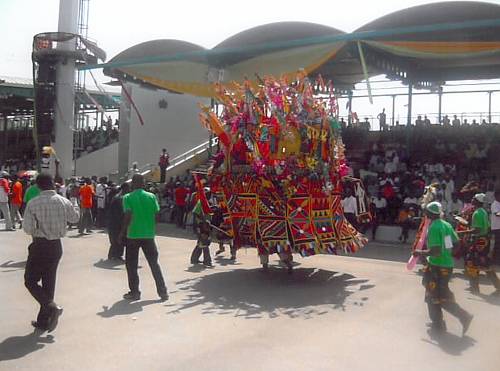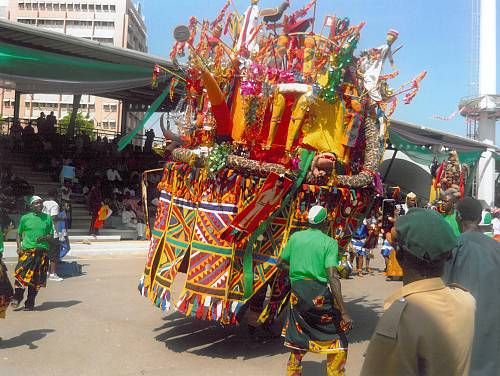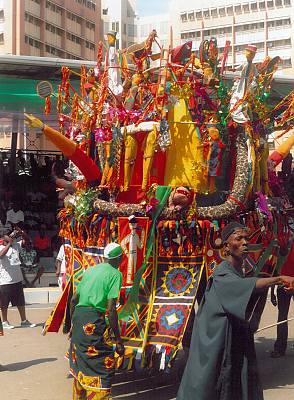Ijele masquerade
Inscribed in 2009 (4.COM) on the Representative List of the Intangible Cultural Heritage of Humanity

In many communities in the state of Anambra in south-eastern Nigeria, celebrations, burial ceremonies and other special occasions during the dry season to evoke fertility and a bountiful harvest feature the performance of the Ijele masquerade. The mask is about four metres tall – so large that it takes a hundred men six months of work to prepare the costume and build an outdoor house to hold it before a performance. Divided into upper and lower segments by a large python at the centre, the ijele is constructed of colourful fabric on a skeleton of bamboo sticks and decorated with figurines and depictions of every aspect of life. The towering masked figure dances at the culmination of a series of other masquerades, protected by six ‘police’ and carrying a mirror with the power to draw in and punish evildoers. Ijele mask carriers, chosen by ballot, seclude themselves for three months, during which they live on a special diet to acquire the strength necessary to don the mask. The masquerade plays a number of important roles in the community: spiritually, it marks both festive and solemn occasions; politically, it provides an opportunity to reaffirm loyalty to a chief or king; and culturally it provides a popular entertainment as young boys and girls sing and dance to the tunes of Akunechenyi music.
